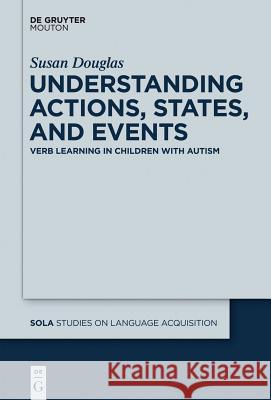Understanding Actions, States, and Events: Verb Learning in Children with Autism » książka
Understanding Actions, States, and Events: Verb Learning in Children with Autism
ISBN-13: 9781614510949 / Angielski / Twarda / 2012 / 235 str.
Understanding Actions, States, and Events: Verb Learning in Children with Autism
ISBN-13: 9781614510949 / Angielski / Twarda / 2012 / 235 str.
(netto: 729,97 VAT: 5%)
Najniższa cena z 30 dni: 690,85
ok. 30 dni roboczych
Bez gwarancji dostawy przed świętami
Darmowa dostawa!
This book explores an understudied area of language development in autism - namely, how children with autism learn the meaning of verbs. The key feature is a profile of verb acquisition in autism derived from qualitative analysis of the conversational language of ten children with autism. Douglas examines whether this profile is typical or atypical compared with verb learning in neurotypical children. Verb use is central to linguistic development, and the ability of children with autism to develop and use verb categories is of interest, because verbs also encode information about the number and type of participants and the temporal location of the activity/event. Moreover, the acquisition of verb meanings is often dependent on other cognitive skills, such as the recognition that human beings have beliefs and desires which motivate their actions. All these are areas which are widely considered problematic for children with autism and continue to generate much discussion among researchers and clinicians. This investigation is among the first studies of its type, offering new insights into the process of language acquisition in autism.
Debate regarding the ability of children with autism to acquire verbs is both limited and inconclusive. This book explores this understudied area of language development in autism to answer the question: How do children with autism learn the meaning of verbs? The approach presents a critical survey of qualitative and quantitative research on verb acquisition in autism, assessing the theories of language acquisition in typical development, including available empirical research. This investigation is among the first studies of its type, offering new insights into the process of language acquisition in autism.











